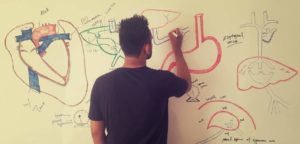Nursing Care Plan For Bladder Cancer
For nursing care plan for bladder cancer, please read this article completely. Let’s start at the very beginning.
Bladder cancer is papillomatous growth in the bladder urothelium that undergo malignant changes and that may infiltrate the bladder wall. Predisposing factors include cigarette smoking, exposure to industrial chemicals and exposure to radiation. Common signs of metastasis include the liver, bones, and lungs As the tumor progresses can extend to the rectum, vagina and retroperitoneal structures. because
Are you a medical student, doctor or a nurse? Do you want to master medical and clinical sciences? Join us today and start boosting your medical knowledge with the world's best medical lectures.LEARN MORE
Assessment
- Painless hematuria
- Dysuria
- Gross hematuria
- Obstruction of urine flow
- Development of fistula ( urine from the vagina, fecal material in the urine)
Diagnostic Evaluation
Primary Nursing Diagnosis is the risk for altered urinary elimination related to the obstruction of urinary flow. because
Medical Management
Radiation
Most bladder cancers are poorly radiosensitive and require high doses of radiation. Radiation therapy is more acceptable for an advanced disease that cannot be eradicated by surgery. Palliative radiation may be used to relieve pain and bowel obstruction and control potential hemorrhage and leg edema caused by venous or lymphatic obstruction. Intracavitary radiation may be prescribed which protect adjacent tissues. External radiation combined with chemotherapy or surgery may be prescribed because of the external radiation alone may be ineffective. because
Complications of radiations:
- A bacterial cystitis
- Proctitis
- Fistula formation
- Ileitis or colitis
- Bladder ulceration and hemorrhage because
Are you a medical student, doctor or a nurse? Do you want to master medical and clinical sciences? Join us today and start boosting your medical knowledge with the world's best medical lectures.LEARN MORE
Chemotherapy
- Intravesical installation
Surgical Interventions
1. Transurethral resection of the bladder
2. Partial Cystectomy
3. Cystectomy and urinary diversion
4. Ileal conduit
The ileal conduit also is called ureteroileostomy or Bricker’s procedure. Ureters are implanted into a segment of the ileum, with the formation of an abdominal stoma. The urine flows into the conduit and is propelled continually out through the stoma by peristalsis. The client is required to wear an appliance over the stoma to collect the urine. Complications include obstruction, pyelonephritis, leakage at the anastomosis site, stenosis, hydronephrosis, calculuses, skin irritation and ulceration, and stomal defects. because
5. Kock pouch
Are you a medical student, doctor or a nurse? Do you want to master medical and clinical sciences? Join us today and start boosting your medical knowledge with the world's best medical lectures.LEARN MORE
because
6. Indiana pouch
A continent reservoir is created from the ascending colon and terminal ileum, making a pouch larger than the Koch pouch. Postoperatively, the client will have a 24 to 26 Foley catheter in place to drain urine continuously until the pouch has healed. The Foley catheter is irrigated gently with NS to prevent obstruction from mucus or clots. Following removal of the Foley catheter, the client is instructed in how to self-catheterize and to drain the reservoir at 4 to 6-hour intervals. because
7.Creation of a neobladder
Creation of a neobladder is similar to the creation of an internal reservoir, with the difference being that instead of emptying through an abdominal stoma, the bladder empties through a pelvic outlet into the urethra. The client empties the neobladder by relaxing the external sphincter and creating abdominal pressure or intermittent self- catheterization. because
8. Percutaneous nephrostomy or pyelostomy
9. Ureterostomy
10. Vesicostomy
Nursing Intervention
Are you a medical student, doctor or a nurse? Do you want to master medical and clinical sciences? Join us today and start boosting your medical knowledge with the world's best medical lectures.LEARN MORE
Nursing Care Plan For Bladder Cancer
Medical Disclaimer: The information provided on this website (www.madeformedical.com) is only for educational purpose and is Copyrights Protected. While we tried hard to write quality articles but still, the articles and the information within them is not guaranteed to be free of factual errors or typos and hence may not be correct. You are advised to independently verify the claims in the articles and make your own conclusion.

